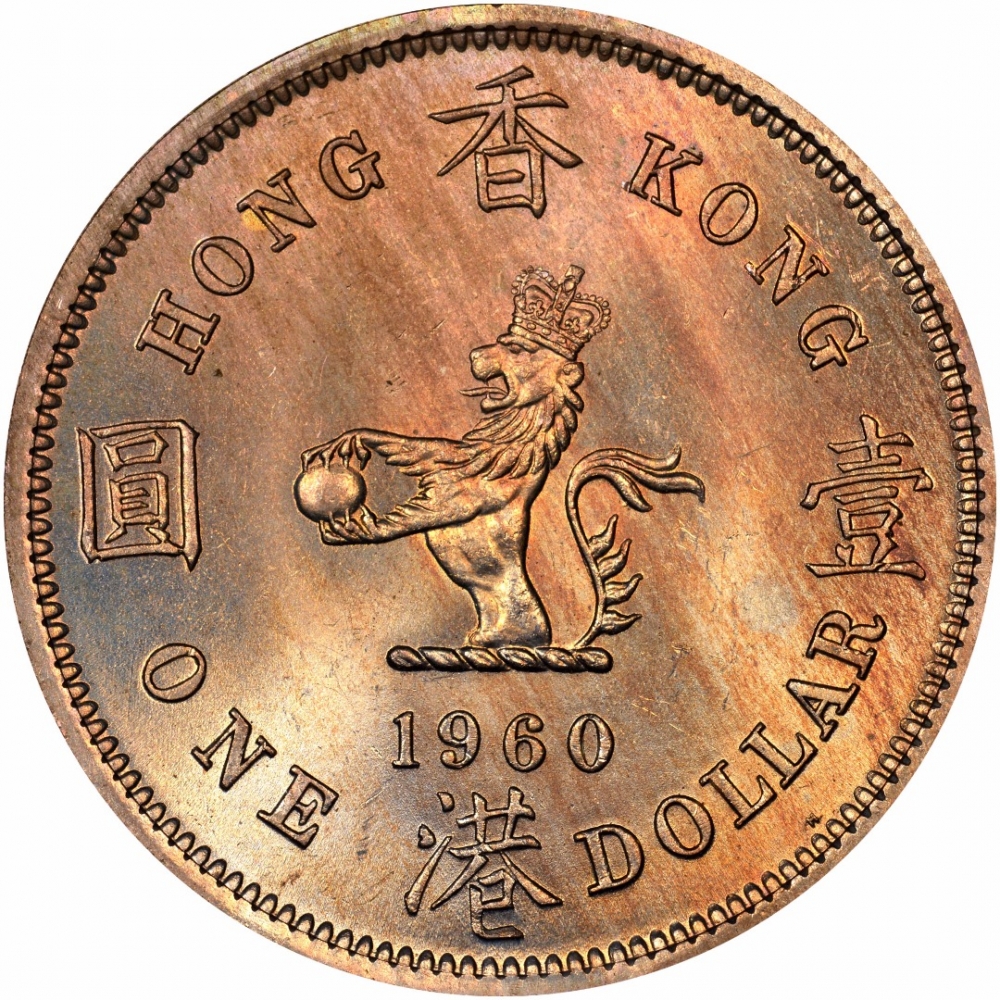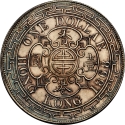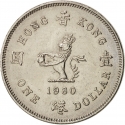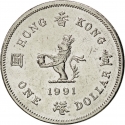You are about to finish your registration. Please check your mailbox (including spam folder). There should be a letter with a confirmation link. Check setting to make sure that your e-mail address is correct.
Send letter again
Obverse

|
First crowned portrait of HM Queen Elizabeth II facing right, wearing the stylized heraldic Tudor Crown. QUEEN ELIZABETH THE SECOND |
|---|---|
Reverse

|
A crowned lion and the year of minting, as well as the country's name and the coin's denomination in both English and Chinese. Crowned British lion holding a pearl is the Crest of Coat of Arms of Colonial (British) Hong Kong. HONG 香 KONG |
| Edge |
1 Dollar
1st portrait
KM# 31 Schön# 22.1
Characteristics
| Material | Cupronickel |
| Weight | 11.7 g |
| Diameter | 29.8 mm |
| Thickness | 2.25 mm |
| Shape |
|
| Alignment | Medal |
| Alt # |
|
| Mints |
Heaton Mint, Birmingham (H) Kings Norton Metal Company, Birmingham (KN)
|









